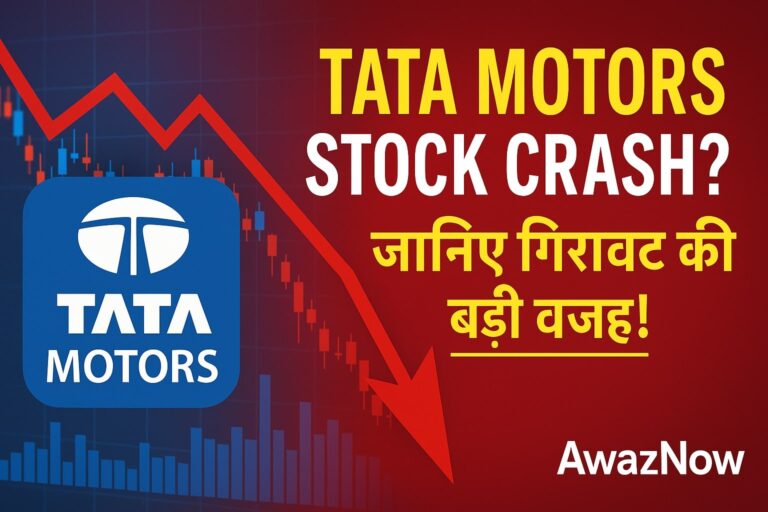Have you ever looked at a company’s share price and wondered, “Is this stock really worth the price I’m paying?” If yes, then understanding the book value of a share can help you answer that question. In this blog post, I will explain the book value of a share in the simplest way possible no complex jargon, just real-world understanding. Whether you’re a beginner investor or someone trying to grow your financial knowledge, this is for you.
What is Book Value of a Share?
Imagine you own a small business. You have a shop, some furniture, inventory, and cash in the bank. These are your assets. You also have some loans and unpaid bills these are your liabilities. If you sell all your assets and pay off your liabilities, whatever money is left is your net worth. That’s exactly what book value means for a company.
Book Value = Total Assets – Total Liabilities
Now, if the company has issued shares to the public, we divide this net worth by the total number of shares to get Book Value Per Share (BVPS).
BVPS = (Shareholders’ Equity – Preferred Equity) ÷ Total Outstanding Shares
This tells you how much one share is worth based on the company’s own records not the stock market price.
Why is Book Value Important?
The book value gives you a sense of what the company is worth “on paper.” It’s not influenced by hype, rumors, or trends just hard financial facts. Here’s why investors use it:
Gives You the Company’s Real Worth
While the market price keeps changing daily, the book value shows the real financial strength of the company.
Helps You Spot Undervalued Stocks
If a stock is trading below its book value, it might be undervalued meaning you could buy it for less than it’s actually worth.
Useful During Market Crashes
When the market is down and prices are low, book value can tell you whether a company is still strong inside.
A Simple Example to Understand It Better
- Let’s say there’s a company called BrightTech Ltd. Here are some of its numbers:
- Total Assets = ₹100 crore
- Total Liabilities = ₹40 crore
- Preferred Equity = ₹10 crore
- Outstanding Shares = 50 lakh
To the point calculation:-
- Shareholders’ Equity = ₹100 crore – ₹40 crore = ₹60 crore
- Equity for common shareholders = ₹60 crore – ₹10 crore = ₹50 crore
- BVPS = ₹50 crore ÷ 50 lakh = ₹100
- So, each share has a book value of ₹100.
- Now, if the market is offering that share at ₹80, it might be a hidden gem.
Book Value vs Market Value: What’s the Difference?
This is a common question, especially for new investors.
- Book Value is based on the company’s financial records.
- Market Value is the current share price in the stock market.
Sometimes, the market value is higher than the book value. This could be due to:
- Growth potential
- Strong brand name
- High future earnings
Other times, the market value is lower than book value. This might mean:
- The stock is undervalued
- Investors have lost confidence
- The company is going through tough times
The Price-to-Book (P/B) Ratio
To compare a stock’s market price with its book value, investors use something called the P/B ratio.
P/B Ratio = Market Price ÷ Book Value Per Share
How to Read It:
P/B < 1: The stock might be undervalued
P/B = 1: Fairly valued
P/B > 1: Overvalued or expected to grow
Example: If a stock’s book value is ₹100 and it’s trading at ₹75, the P/B ratio is 0.75 – which might indicate an undervalued stock.
When Book Value is Most Useful
Book value is especially helpful for companies that own physical assets, such as:
- Banks
- Real estate companies
- Manufacturers
These companies have assets like land, factories, and equipment – all of which are easy to value.
But for tech companies or service-based businesses, book value may not tell the whole story. These firms depend more on software, branding, and people – which aren’t always reflected in the balance sheet.
Limitation of Book Value
Even though book value is helpful, it’s not perfect. Here’s why:
- It Ignores Intangible Assets
Book value doesn’t count things like brand reputation, loyal customers, or innovation.
- Old Asset Values
Assets are recorded at the price they were bought, not their current market value. So, if a building was bought 20 years ago, its value might be outdated.
- Not for Every Business
For digital or fast-growing businesses, other metrics like earnings or cash flow may be more useful
What Should You Do as an Investor?
Book value is a great starting point, but not the only thing to look at. Here are a few tips:
- Use book value with other ratios like PE (Price to Earnings) and ROE (Return on Equity).
- Compare the book value over several years to see if the company is growing.
- Check the P/B ratio and compare it with other companies in the same industry.
- Always understand why a stock is priced below its book value – sometimes there’s a good reason.
Conclusion: Why Book Value Deserves Your Attention
The book value of a share might seem like a boring accounting term, but it’s actually one of the smartest tools you can use as an investor. It helps you cut through the noise and focus on what the company is really worth. In a world where stock prices change by the minute, book value gives you a calm, clear picture – based on facts, not feelings. So the next time you’re researching a stock, don’t just look at the price. Check the book value too. It might help you find your next big opportunity
Source:-




